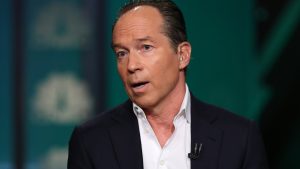The BT (LSE: BT) share price has had a barnstorming year, rising 27.76% over the last 12 months. But it has a long way to go. The shares are still down 18.1% over five years.
At one point, BT shares had lost more than 75% of their value. That brought out bargain seekers, while scaring others away. I watched from the sidelines, deciding it was too risky for me.
And I’m still watching. There’s finally some light at the end of what has been a long, dark tunnel for BT. Is now the time to buy?
Can BT continue its recent recovery?
The turning point was 2023’s full-year results, published on 16 May. BT reported a 31% drop in annual profits but the shares jumped 10% after CEO Allison Kirkby declared the company had reached an “inflection point” as its nationwide full-fibre broadband rollout programme had finally hit peak capex.
The group also hit its £3bn cost savings target a year early and was aiming for another £3bn in gross annualised cost savings by 2029.
Kirkby hiked BT’s dividend by 3.9%. This killed off concerns that the dividend was unsustainable and might be cut. Given that the shares were yielding around 6% at the time, this was the best reason to hold BT.
The dividend looks reasonably secure today, with Kirkby forecasting that normalised free cash flow will double to £3bn by 2030.
Today, the shares have a trailing dividend yield of 5.54%, comfortably above the FTSE 100 average of 3.54%. That’s forecast to grow to 5.65% in 2024 and 5.77% in 2025. Which isn’t spectacular, but isn’t bad either.
BT shares have climbed steadily since, albeit with volatility along the way. They jumped 8% on 12 August after Indian conglomerate Bharti Enterprises took a 24.5% stake, then plunged 8% on 20 August as TV provider Sky chose to offer its broadband via alt-net provider CityFibre.
This stock’s cheap but still risky
That was a blow to BT which has poured £15bn into Openreach and hopes to cover 25m homes by the end of 2026. Yet this remains a highly competitive market. BT lost a record 200,000 customers to rivals in the first quarter alone.
Kirby still has to tackle the long-standing problem of the group’s massive £20bn debt pile, which exceeds its £14.1bn market-cap, and its pension scheme deficit. I also think her dream of using artificial intelligence (AI) to axe 10,000 posts by 2030 – with 55,000 jobs going in total – sounds a little fanciful.
Many of these concerns are in the price, with BT shares still valued at a lowly 7.81 times trailing earnings despite the recent recovery. That’s half the FTSE 100 average of 15.3 times.
The 14 analysts offering one-year price forecasts for BT have set a median target price of 200.4p. That’s up 38.46% from today’s 144.4p. There’s a huge range in there though, from a low of 110p to a high of 290p.
BT’s edging towards the light but still has a huge journey ahead. I’m tempted by that low valuation and high yield, but wary. I’ll keep watching but I won’t buy it today.
This post was originally published on Motley Fool






